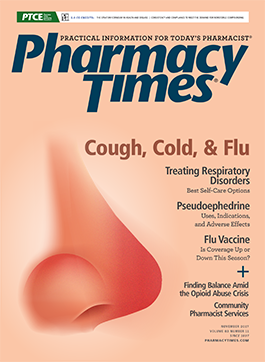Community Pharmacist Services: Trumpeting Pharmacists Role in Improving Outcomes and Reducing Costs
If community pharmacies are to succeed in obtaining payment for enhanced services, then someone needs to help payers understand what pharmacists are doing to improve outcomes and reduce costs.
If community pharmacies are to succeed in obtaining payment for enhanced services, then someone needs to help payers understand what pharmacists are doing to improve outcomes and reduce costs.
Fortunately, 2 prominent pharmacy leaders did just that during their presentations at a conference of payers and providers.
Mindy Smith, BSPharm, RPh, vice president of pharmacy practice and innovation for PrescribeWellness, LLC, and Trista Pfeiffenberger, PharmD, MS, director of quality and operations for Community Pharmacy Enhanced Services Network (CPESN), made the case for pharmacies at Health Plan Innovations for Care Coordination. The conference, held September 13 and 14, 2017, in Scottsdale, Arizona, attracted nearly 100 senior managers from health insurance companies and provider networks.
Smith participated on a panel for “Improving Care Transitions to Reduce Readmissions and Improve Outcomes.” In her comments, she referenced the National Report Card on Adherence, commissioned in 2013 by the National Community Pharmacists Association, which identified a patient’s personal connection with a pharmacist or pharmacy staff member as the top predictor of medication adherence.
Smith stressed that health plan managers would benefit by exploring ways to leverage the community pharmacist’s strong relationship with patients. “Community pharmacists are another valuable touch point to the health care team and can improve patient care by providing services such as medication counseling, comprehensive medication reviews, and contacting prescribers to recommended medication changes based on those reviews,” she said.
That message was reinforced by Pfeiffenberger, who explained the benefits of working with community pharmacies and went into detail about the types of enhanced services they can provide. “For patients who have complex medication regimens and other challenges such as limited access to transportation, enhanced pharmacy services, such as medication synchronization with adherence packaging and home delivery, can make a difference in how well a patient can self-manage and adhere to their regimen,” she said in her presentation.
The good news is that payers and providers recognize that safe and effective medication use is paramount to achieving optimal health out- comes, especially in complex health populations, Pfeiffenberger said.
Central to Pfeiffenberger’s remarks was alerting payers and providers in the audience to the fact that organized groups of capable, committed community pharmacies have been established across the country in the form of CPESN Networks. “These groups make it practical for payers to contract for their patients’ care and to ensure they received the enhanced pharmacy services these groups are able to provide,” she said.
Smith said that she was pleased that the nationally promoted event brought in people from organizations such as Blue Cross Blue Shield of Massachusetts and Genesee Health Plan in Michigan. Representatives from provider networks, such as Gateway Health in Pennsylvania and Sentara Healthcare, which operates in North Carolina and Virginia, also attended. These are the kinds of organizations that can immediately benefit from enhanced pharmacy services.
Bruce Kneeland is a community pharmacy consultant who specializes in helping pharmacists and pharmacy owners profitably provide enhanced patient care.
He can be reached at BFKneeland@gmail.com.

